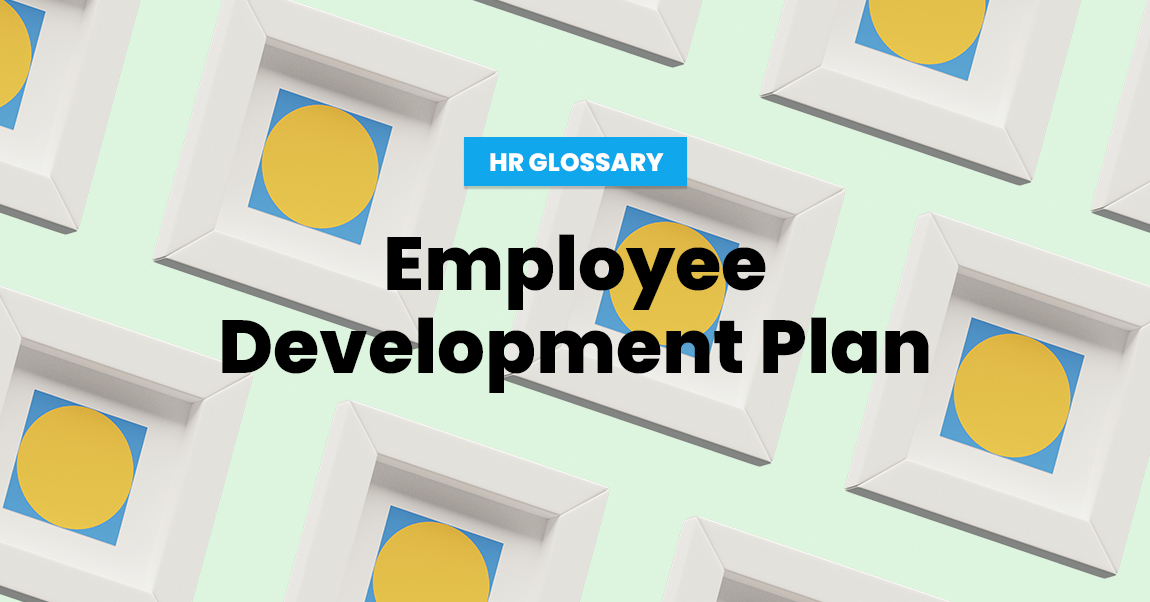Recognizing someone’s true potential and encouraging them to take a step forward is a particularly rewarding and beneficial experience – to say the least. Taking good care of the members of your workforce is paramount. By creating an effective employee development plan, you’ll be backing up your team and helping them grow and prosper.
Still, you must absorb the relevant information and develop an efficient strategy before setting these plans in motion. Grasp the true meaning of this term & best practices, and get your hands on some valuable employee development plan ideas ASAP to help each member of your organization thrive.
What Is an Employee Development Plan?
According to some studies, only one-third of the entire American workforce stated that they are utterly satisfied with their training and development programs provided by employers. Surely, many companies offer courses, certifications, and numerous benefits, like cafeteria plans or other comprehensive packages. However, only when you truly understand your employees’ needs will you be able to come up with a successful tactic.
So, let’s define the terms first. These development plans are often mentioned as employee growth plans. They are designed to help each staff member enhance their skills and acquire new insights. The precise goals and outcomes can differ. Some are being trained for leadership. Others will learn about new sets of responsibilities that are becoming more and more relevant within the firm. Some are simply boosting their expertise to get better results in the long run.
These plans are actively used by managers and team members. In an ideal scenario, these agendas encompass both professional and personal growth.
Know the Benefits: Why Is Employee Development Essential?
The value of employee training and growth can be measured by numbers. Aside from its tremendous impact on employee experience and engagement, there’s even more to it. So, what is the purpose of an employee development plan? Have a look at these stats and prepare to be amazed:
- One-half of businesses without a proper onboarding process has struggled with employee retention,
- Companies that offer learning opportunities reduce employee turnover by more than 30%,
- 34% of employees who left their past job sought a better chance to improve their skill sets.
Finally, Statista’s study on learning & development shows that, on average, an employer spends more than $1,300 per staff member on training. Now that we have the figures all lined up, let’s see about other benefits of developing these structured action plans:
- Motivation and productivity in the workplace will increase substantially,
- The performance will improve, and better results will follow,
- Qualified applicants will show an interest in your company, and it will get easy to turn candidates into brand ambassadors,
- Other recruitment and hiring metrics will also be enhanced,
- Long-term goals for your company’s development will become more achievable.
Do these outcomes sound like something worth pursuing? Ensure a bright future for your team, improve your recruitment processes, boost your brand, and watch how overall satisfaction comes along.
Employee Development Plan Examples
There are multiple types of professional development plans you can create. Their structure mainly depends on aligning the company’s needs with the goals of your employees. The most common ones are:
- Performance-based plans that should include measuring the results, along with employees’ experience and motivation,
- Management by setting, reaching, and modifying employees’ short-term goals
- Career ladder and succession planning, relying mainly on mentorship and similar programs.
In addition, here are a few good examples of an employee development plan:
- Education courses and paid tuition, which is a great fit for those aiming to pursue a higher degree or certification to get a chance of promotion.
- Seminars and similar organizations entail visiting conferences and workshops hosted by other companies or organizing events sponsored by the firm to network and have a more active role in their business and industry.
- Expanded tasks and responsibilities, when employees learn and use new technologies, systems, and methods and share their knowledge with others. They could also learn about new developments in their line of work to stay competitive in the field or accept more challenging duties to advance in their roles.
So, basically, here’s how it works – Let’s say someone’s been part of your team for a few years now. These days, they feel like it’s time to move forward and obtain some leadership skills. First of all, the managers should discuss this topic with them. After that, they could be offered to train and mentor colleagues or get a similar set of duties. All along, they would be counting on help from more experienced leaders and relying on their tips.
How Do You Write an Employee Development Plan?
When dedicating time and efforts to help out your squad pursue their aims, you must start with the basics. Go step-by-step, and be devoted to each of these unavoidable stages:
- Know your actual needs and whether they’re in line with your staff’s aspirations,
- Direct your focus toward each individual and hear them out regarding their pain points and fields of interest,
- Explore various opportunities for career development and offer the ones that suit your crew best,
- Keep track of the results continuously and refine your strategy if needed.
If you stick with these essential steps, your employees will certainly have enough room to upgrade their skills and get as far as they intended. Ultimately, fulfilling their potential will affect the whole firm favorably.
Know Your Needs
Before you write a job description and promote it through countless job boards and channels, you will brainstorm and assess your precise hiring needs. And just like any other carefully crafted action plan, this one starts with some introspection. How’s your company doing right now? What are your strong suits? Is there anything that should be slightly brushed up or built from scratch? How do job seekers and passive candidates perceive you? How do employees feel about working in your firm?
These are only some of the questions that need answering if you genuinely aim to do great things and become an employer of choice. But, when it comes to creating an employee development plan, you should narrow down your reflection and focus on these main areas:
- Look into the skills you have on board,
- Be objective about the gaps you are facing,
- Revisit your strategic needs and business objectives,
- Check if you’re aligned with industry trends and requirements,
- Measure employee performance,
- Review employees’ satisfaction and strive to improve it.
If you intend to keep a healthy and productive working environment, and help your people stay on top, make sure to analyze your state of affairs through and through.
Personalize Every Employee Development Plan
Hand-in-a-glove strategies drive the best outcomes. Still, they do take longer to come up with. Personalized experiences always require some time and careful planning, but they’re unquestionably worth your while.
When creating a development tactic for a staff member, you should know their needs to the very core. There are quite a few ways to grasp someone’s ambitions. Still, one-on-ones take the cake. Here’s what to ask during these meetings:
- Know about the necessary skills for the job and which ones are used daily,
- Hear about the main pain points and ask about the most remarkable accomplishments,
- Ask if the employees are adequately equipped to perform their tasks,
- Seek their advice on what you should focus on to boost their performance and insights,
- Learn about their personal goals,
- Check out if they’re uplifting their expertise individually,
- Let them know that you’ll help them overcome their career obstacles.
Structure a few sets of questions that will enable you to cover these areas. Shape them up to match the tone of your interaction with each staff member, and make them feel supported.
Offer Multiple Opportunities to Learn & Grow
There are various ways to help the employees learn and grow. You can choose to organize workshops in your office, offer online training, or pick another method that suits you best. Other companies and industry professionals are most likely striving to give and receive some knowledge, and you can easily pair up with them or collect an idea or two.
Nowadays, we’re living in a constant remote vs. on-site work dilemma. If your staff is more inclined toward working from home, they’ll probably be more comfortable with soaking up new knowledge online as well. Webinars, ebooks, podcasts, videos, courses, and articles can be helpful and represent fantastic sources of information.
Keep Track of the Results
A well-made strategy is doomed to failure if no one monitors the results. Yes, it might work out quite well. Still, there will be no conclusions to help you the next time around, and you’ll have no way of knowing why and how it worked.
Keeping track of your progress is essential. Watch and analyze the outcomes on two fronts: see how each individual is doing, and look at the big picture. You will need to simultaneously track the effect your plan has company-wise.
Meet up with each team member every once in a while, and discuss their necessities, progress, struggles, and more. Ask about their feedback. By doing so, it will be impossible to slip from your mind that each agenda is adjustable. If the employees’ perspectives have changed, altering the plans you have made for their career development is in order.
Take it Step by Step: What Should be Included in a Work Development Plan?
Each individual plan must be unreservedly personalized. However, you can’t afford to neglect the company’s needs and boundaries. How do you compromise without compromising anything?
Ask these questions to grasp the actual organizational needs:
- What are the main requirements of your business?
- What are its upper hands and drawbacks?
- What skillsets and technologies does the company need to remain competitive in the market?
Be clear regarding the criteria and realistic about the employee’s competence:
- What are the top skills of the employee?
- How can they expand their knowledge and bring more significant results to the team?
- How can these outcomes help their career and growth?
Compare your notes and put the mutual goals in order.
Are You Ready to Move Forward?
Knowing your aims and being well aware of your company’s strengths and downsides is essential to develop any successful strategy. Being able to provide valuable learning opportunities to the employees is no different. Analyze your advantages and drawbacks, have a chat with each staff member, and take it one step at a time with frequent revisions and adjustments. Make sure to prioritize everyone’s well-being and ensure a road to mutual success.




